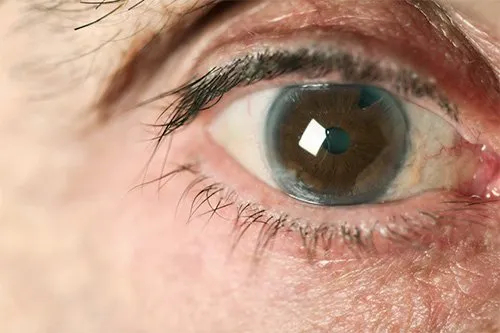Not Only Older Adults Get Macular Degeneration
Posted by: Cape Fear Retina in Blog

Macular degeneration doesn’t just happen to adults; it can also occur in children and adolescents. Recognize the early signs and symptoms of this disease.
While people normally think of age-related macular degeneration when they hear about retinal disorders involving the macula, children, adolescents and young adults can suffer similar central vision loss. Central vision loss that occurs in a younger person is referred to as juvenile macular degeneration.
Juvenile macular degeneration, also known as macular dystrophy, refers to a number of inherited eye diseases that affect the macula—the part of the retina in the back part of the eye that provides central vision. Although these diseases are rare, in order to help your child make the most of his or her remaining vision, you need to be able to recognize the signs and symptoms of early-onset forms of macular degeneration.
Stargardt Disease
Stargardt disease—the most common form of inherited juvenile macular degeneration—is characterized by slow, progressive loss of central vision that begins in childhood. The disease is a genetic disorder that affects the retina of the eye. Along with impaired central vision, symptoms may include light sensitivity and a decrease in color perception. Some loss of peripheral vision can also occur later in life.
Like other hereditary retinal dystrophies, gene mutations are the cause of Stargardt disease. An eye doctor examining the retina may see yellowish flecks in and around the macula. These flecks are an abnormal accumulation of a fatty substance known as lipofuscin. Although progression of the disease varies, corrective lenses or refractive surgery cannot improve the vision loss that occurs.
Best Disease
Best disease, also known as vitelliform macular dystrophy, is a rare, genetic condition that can begin to cause retinal changes during childhood. However, vision problems may not occur until much later in life. Although this type of macular degeneration can sometimes affect only one eye, most often it affects vision in both eyes. Symptoms vary, but often individuals notice that their vision isn’t as clear or that straight lines look wavy.
Best disease progresses in stages. Early on—usually at some point during childhood—an optometrist or ophthalmologist may detect a blister filled with yellow fluid that looks like an egg yolk on the macula. Later—often in the teen years—a cyst forms under the retina. Once the cyst begins to break apart, damage occurs to cells in the layers of the retina, and vision problems begin to occur.
Eventually, the yellow matter disappears but leaves behind scarring and damaged retinal cells. Although the severity of vision problems varies among individuals, blurry or central vision loss normally occurs slowly over time. Generally, difficulty reading small print is one of the first indications of reduced vision.
X-linked Juvenile Retinoschisis
X-linked juvenile retinoschisis is an eye disorder affecting the retina that usually occurs in both eyes. Vision problems begin in childhood and mostly affect male children. The condition damages cells in the macula, which diminishes sharpness of central vision. In some cases, this form of macular degeneration also affects peripheral, or side, vision.
Difficulty reading when children start school is often the first sign of a vision problem. However, some children develop nystagmus—rapid, involuntary eye movements—as infants. Early symptoms of the disorder may also include strabismus, or crossed eyes, and farsightedness. Vision declines throughout childhood and then stabilizes until later adulthood when visual acuity declines again.
Although there is no treatment for X-linked juvenile retinoschisis, eye doctors can prescribe corrective lenses to treat farsightedness and corrective lenses, prism lenses or vision therapy to treat strabismus.
It’s also a good idea not to allow your child to engage in rough play activities or sports that can lead to a hard bump or injury to the face or head and increase the risk of complications such as retinal detachment or vitreous hemorrhage. Either of these conditions can impair vision more or cause permanent blindness.
For answers to questions you may have about macular degeneration diseases that affect children, the ophthalmologists and staff at Cape Fear Retinal Associates are happy to provide more information as part of their comprehensive eye care program.

